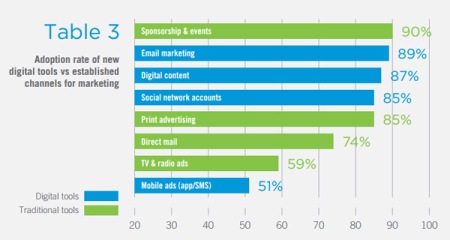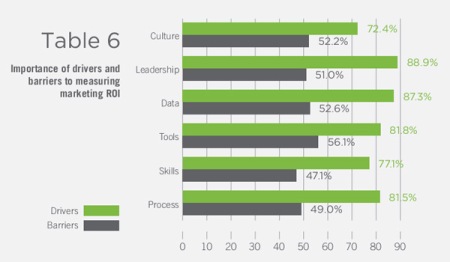 Ah, the L.A. Dodgers, a team whose recent woes under the leadership of Frank McCourt resulted in a purchase that rocked the baseball world. In 2011, Forbes estimated the Dodgers to be worth $800 million, more than the average value of a major league baseball team team. Thanks to a TV deal in March 2012, Forbes upped that number to $1.4 billion. One month later, news erupted that Guggenheim Baseball Management, a consortium lead by Magic Johnson, would acquire the team for a whopping $2.15 billon.
Ah, the L.A. Dodgers, a team whose recent woes under the leadership of Frank McCourt resulted in a purchase that rocked the baseball world. In 2011, Forbes estimated the Dodgers to be worth $800 million, more than the average value of a major league baseball team team. Thanks to a TV deal in March 2012, Forbes upped that number to $1.4 billion. One month later, news erupted that Guggenheim Baseball Management, a consortium lead by Magic Johnson, would acquire the team for a whopping $2.15 billon.
Many questioned the rationale behind this dollar amount, exclaiming the consortium vastly overpaid for a franchise with such a comparatively low net worth. David Carter, executive director of the USC Sports Business Institute, tells Fox Business, that it’s not solely about buying an organization at face value. “It’s purchasing a baseball team that is an anchor that allows you to make money off other revenue-rich opportunities.”
Chief executives that agree with this see the value of a brand. However, many CEOs, CFOs, and accounting teams still see marketing and communications as cost line items rather than buttresses that sustain brands and lend book value to companies.
Columbia Business School recently published two studies related to varying perspectives organization’s have about the value of marketing. The first, “Accounting for Marketing Activities,” found that part of the problem is internal communications. Experts feel that marketers don’t clearly articulate the impact of their expenditures on bottom lines to finance officers. The second, “Marketing ROI in the Era of Big Data,” adds that there’s a need to develop a better understanding of how marketing creates financial returns for companies. Attributing value to marketing is a common struggle.
Marketing’s role, in its most basic form, is to get the word out to the right people through a range of channels. But an integral part of this is communicating a brand’s core message and relevance to its audience, demonstrating value for consumers, which in turn adds value to a company. The foundation of a strong brand is built by delivering on a promise—providing quality and dependable products and/or services. But intangible items like brand persona, experience, and reputation are also largely influential when it comes to actual purchase and loyalty, generating sales and revenue. Much of this process can be attributed to the emotional connection formed between brand and consumer.
Developing meaningful relationships with a brand’s audience is a vital part of path-to-purchase, advocacy, financial growth and longevity. Humanizing brands leverages such relationships. In addition to products and services, they offer distinct images, feelings, experiences, thoughts and perceptions creating differentiated value in the mind of its audience. In fact, a brand is, in essence, an extension of one’s self. Consumers are more apt to buy products from a particular brand that reflects their personality and aligns with their interests and personal values, subsequently raising the net worth of a brand.
Apply this notion to the Dodgers. Another factor contributing to the high-priced offer is that they’re the… L.A. Dodgers, a well-known brand that officially acquired its name over 70 years ago. There’s history behind these “boys of summer,” a term that’s not only in a Don Henley song, but the title of a book based on this very team. More than ticket sales, sponsorship, and TV deals, the bid amount stemmed from relationships with devoted fans and the iconic value of the Dodgers brand in and of itself.
Another prime example is Coca-Cola. In CNBC’s documentary, “Coca-Cola: The Real Story Behind the Real Thing,” Donald R. Keough, former president of Coca-Cola, discussed the implications of its 1985 debacle, the launch of the now-defunct “New Coke.” He received a tearful call from a stranger, an elderly woman. She was heartbroken by the reformulation of its trademark beverage. Interestingly enough, she hadn’t sipped the soda since the 1940s, and therefore not tasted this new iteration. However, the Coca-Cola brand held memories for her, ones that she strongly associated with her childhood. She told Keough that they were playing with her youth. When Coca-Cola decided to lay the original Coke to rest, it took a piece of her past with it.
A CFO may say this is a nice story, but she hadn’t been a consumer in years. Though she may not have spent a nickel on Coca-Cola in decades, the brand clearly resonated with her. And there were plenty of present-day consumers who also protested New Coke. Value to her and the millions of others was emotive. For those who did not like the taste, had the emotional connection not existed, they wouldn’t have expressed such outrage over the new formula. Instead, they simply would have ceased buying it. Keough noted to CNBC, “We did not understand the deep emotions of so many of our customers for Coca-Cola.”
BY ALLIE ABODEELY




